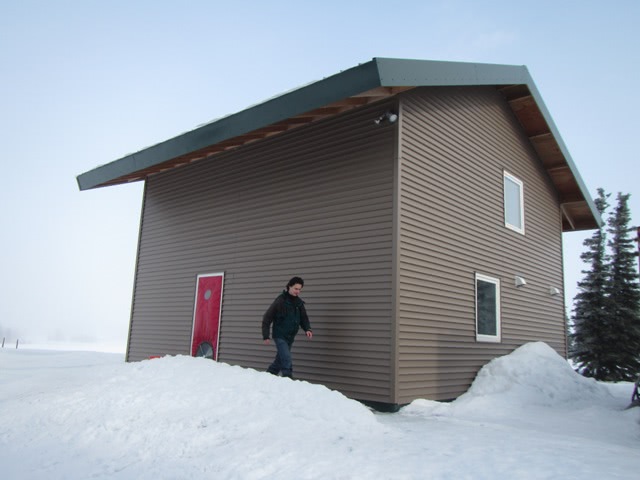
Thermal Delight
By Heather Nelson
Looking at the “world’s most airtight house,” I have to ask—how did we get here? If this shed of a building with two windows is what we are holding up as an example of sustainable design, aren’t we missing something?
Let’s back track. According to Maslow’s Hierarchy of Needs, shelter is one of the first requirements for survival. Our ancestors created traditional dwellings out of this basic need to protect our relatively fragile bodies from extreme climate conditions. In a cold climate, fire or body heat alone was used in small insulated dwellings to heat the space, but without access to the modern HVAC system these steps alone did not get the dwelling to a comfortable temperature. Therefore, thermal comfort was supplemented through clothing—it was locally applied directly to the source. Even in igloos the Inuit people are still bundled up.
I know we wear sweaters in the winter, but when was the last time you had to wear a down jacket to bed? With the invention of HVAC and its subsequent takeover in the 1950s, suddenly we had the ability to mechanically heat or cool a space to the exact temperature range at which ASHRAE tells us we feel “comfortable.” We switched from radiant-dominated heating to convective. Why should we continue parading around in fur coats if we can keep the internal air temperature at a cozy 68°F? Enamored by the ability of the machine which was deemed “the greatest contribution to civilization in this century,” we rapidly lost our reliance on the supplemental personal comfort systems of our ancestors in favor of preconditioning all air to a homogeneous level of “comfort.”
Years later, we realized that these magical mechanical comfort systems were massive energy hogs. With an energy crisis on our hands, we started forming our buildings exclusively around mechanical equipment, and we became slaves to HVAC. We tightened our building envelopes to lose less air, and voila – the Dillingham house!
So back to the original question—what are we missing? The supplemental personal comfort system approach of our ancestors. We became so obsessed with heating or cooling the air around us that we forgot that it’s not the air that needs to be heated or cooled, it’s us. Why must we fill 1,000 cubic feet with warm air to heat one person who occupies two cubic feet of space? Wouldn’t it be more efficient to bring the heat directly to the source and cut out the wasteful middle man?
A few weeks ago, I had the opportunity to attend a conference at the Center for the Built Environment(an organization to which RTKL is an industry partner) in Berkeley, California. Through their research, CBE strives to improve the environmental quality and energy efficiency of buildings. One of their current studies is the development of Personal Comfort System office chairs that focus warmth or cooling on key parts of the body to provide individualized comfort. If implemented, CBE estimates that these PCSs alone could save 30% of the energy consumption due to HVAC equipment. It would also have a profound impact on occupant satisfaction, as comfort becomes individualized instead of monopolized.
The idea of bringing back thermal comfort to the people instead of distributing it uniformly to the air is incredible. This would allow us to save energy by expanding the set point ranges on HVAC systems. It could also allow daily and diurnal temperature swings to occur internally, which is also an energy saver. And all of this could occur without sacrificing occupant thermal comfort. This would not only lead to increased satisfaction (which has major ramifications on productivity, sales, recovery rates, etc.), but it would also bring back something that we have long been missing—thermal delight. No longer would all internal surfaces maintain a consistent temperature of 68°F ± 4°F, but the delight in the contrast of cold and warm could bring life back into our stale buildings.
“When thermal comfort is a constant condition, constant in both space and time, it becomes so abstract that it loses its potential to focus attention… To enjoy being warmed or cooled we need some awareness of the process.” – Lisa Heschong, Thermal Delight in Architecture
If the current direction of the built environment is leaning toward Dillingham, something’s got to change. We need to drastically rethink how we see thermal comfort—to bring back the joy and the livelihood which we have lost. Personally, I vote less Dillingham and more thermal delight.

Images via: OProject@Home, alaskapublic.org
